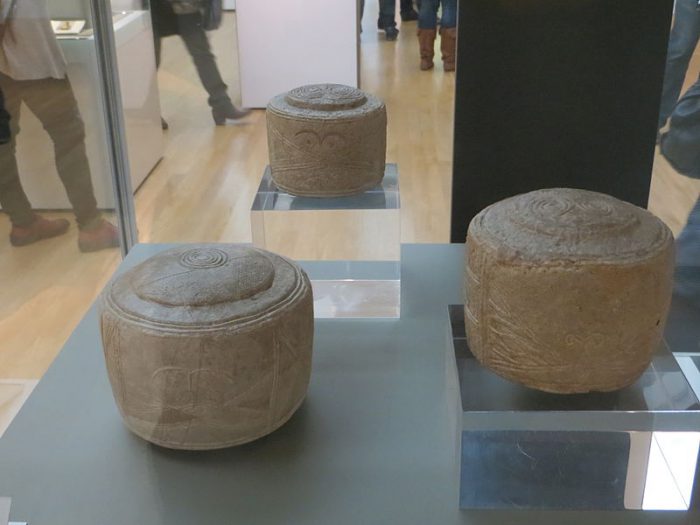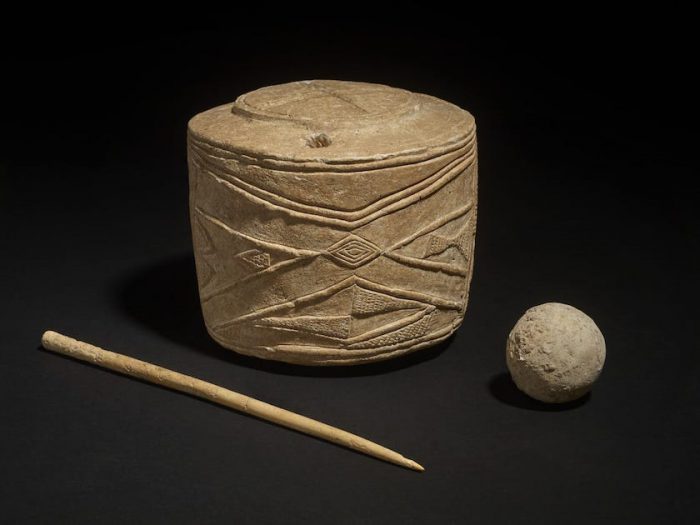It is a find that experts at the British Museum are calling the "most important piece of prehistoric art to be found in Britain in the last 100 years." What is it? An epic cave painting? A carving used in rituals? Nope.
It's a kids toy!
The 5,000 year-old drum was discovered on an estate in Burton Agnes, a village in East Yorkshire, England. Interestingly, the ground was only dug up so that the owner of the property could erect a statue in the area. So in making room for one piece of art, they found another!
The object going on display as a part of the new World of Stonehenge exhibit at the British Museum, but you can get a sneak peek now!
Not for music

The 'Folkton Drums'—found in 1889—are the only other known example of this art. (Wikimedia Commons/British Museum)
The drum is made of chalk and covered in symbolic carvings. The symbols—which include a 'butterfly' shape—are some of the most fancy on an object found in this part of the world from this time. Clearly, the people who made it spent a lot of time on the drum.
Archeologists have seen these sorts of drums before, but not in a very long time. In 1889 (over 130 years ago!), three similar drums were found in an English village called Folkton. They had always wondered if there were others. And now they know, there were!
Even though experts call it a drum, it was not a musical instrument. Instead, it was likely either a piece of religious art or a toy for children. And why do experts think it might be something for the kids?
Because it was found at a burial site for children.
Important objects
The remains of three children were discovered at the site. It is not known how they died, but it is significant that they were buried with this drum, a long pin made of bone, and a clay ball. These objects were likely important to the children while they were alive.
Put all of these factors together and you can see why researchers are excited. It is a chance to see something really rare about people we know little about. Maybe if more drums are found, experts can better understand what the carvings mean and why they were important enough to be buried with loved ones.
 The drum found in Burton Agnes, along with a pin and ball also found at the site. (Trustees of the British Museum)
The drum found in Burton Agnes, along with a pin and ball also found at the site. (Trustees of the British Museum)









